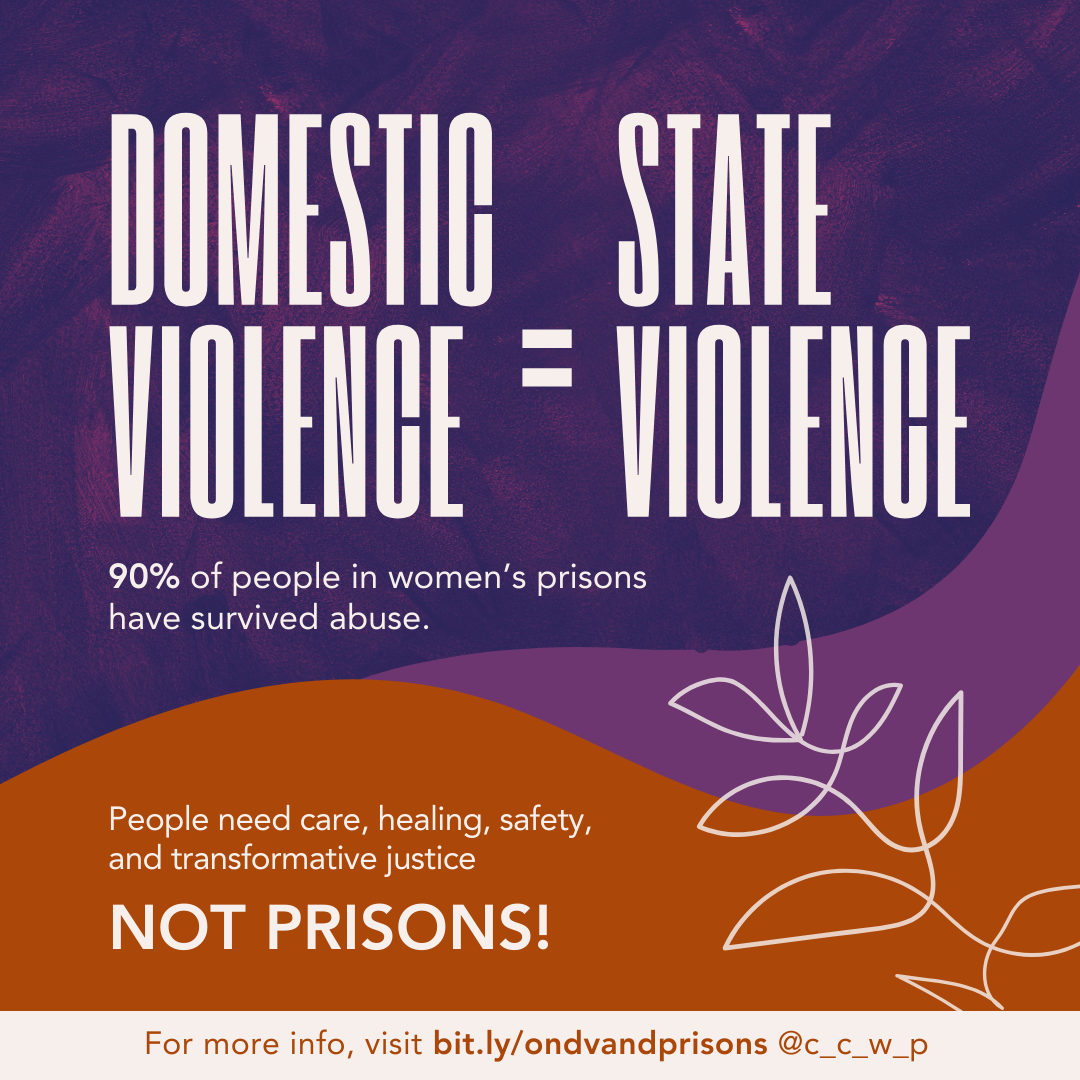Domestic Violence = State Violence; Close Women's Prisons
90 percent of people in women's prisons are survivors of domestic abuse

October is Domestic Violence Awareness month. As we look to uplift and honor survivors of DV this month, we’d like to call attention to an often invisibilized population of people that DV impacts—people hidden in California women’s prisons. Let’s not forget those who lost their freedom due to DV and who continue to suffer from state violence that mirrors and perpetuates the domestic violence they survived. Research shows that 77% to 90% of people incarcerated in women’s prisons report having experienced prior emotional, physical, and/or sexual abuse.
The 2023 comprehensive report From Crisis to Care, a collaborative effort from Human Impact Partners, Transgender, Gender-variant, and Intersex Justice Project, as well as DropLWOP coalition partners Californians United for a Responsible Budget (CURB) and California Coalition for Women Prisoners (CCWP), points to the inescapable conclusion; women’s prisons only perpetuate catastrophic trauma and harm. To reverse cycles of gendered and racial violence plus intergenerational trauma and poverty, California needs to invest in community controlled resources that are life affirming and health promoting. Our communities need to develop non-carceral, non-punitive forms of accountability and close women's prisons!
According to data from the California Department of Corrections and Rehabilitation (CDCR), in 2023, 3,798 people were incarcerated in women’s prisons in California. We know that a staggering number of these 3,798 incarcerated people are criminalized survivors of DV and other trauma. Research shows that 77% to 90% of people incarcerated in women’s prisons report having experienced prior emotional, physical, and/or sexual abuse. A disproportionate percentage of transgender people also report significant trauma prior to incarceration, including experiences of bullying, family rejection and isolation, eviction, criminalization, and mistreatment by police. Each of these factors is associated with higher rates of incarceration, primarily due to a lack of investment in community-based mental health support services and non-carceral violence intervention.
However, progress is being made. As noted above, 3,798 people were incarcerated in California women's prisons in 2023, but this number is 70.8% less than in 2010 when there were 12,668. This dramatic reduction was a result of strong, persistent legal challenges and advocacy campaigns by dozens of organizations and thousands of people from our communities, resulting in marked policy changes in California. Collectively we were able to reduce the population of women’s prisons by over 9,000 in little more than a decade. Looking forward, we can decarcerate a few thousand more and close the state’s two remaining women’s prisons.
Action steps our advocates and supporters can take toward this important effort:
- Sign on to get more information and support the effort to close California women's prisons (Google forms)
- Download social media graphics you can post on your social feeds to vocalize and share your support to close these prisons (Google Drive folder)
- Visit the CCWP website and read more information about the nexus of Domestic Violence and State Violence, as well as read more information about CCWP and their advocacy efforts.










